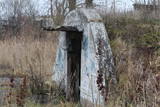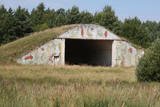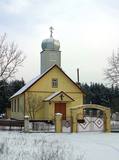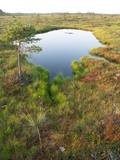| Нo | Название | Описание |
|---|---|---|
|
Круговая тропа длиной 1,2 км рядом с маяком Шлитере ведет вниз с Голубых гор или древнего берега Балтийского ледового озера и продолжается вдоль лесов и болот прилегающей равнины. |
||
|
В юго-западной части бывшего аэродрома Спилве до сих пор находятся бетонные площадки, где в советское время базировались военные вертолеты.
|
||
|
«Сердце Латгалии», где в XIV - XII вв. поднялся укрепленный латгальский замок. На месте латгальского замка в 1285 году Ливонский орден приступил к строительству каменного замка. После крушения Ливонии (Резекне вошел в составе Польши) город находился в запущении. Экономическая жизнь в Резекне возобновилась во второй половине XVIII столетия. Со строительством шоссе Санкт-Петербург – Варшава (1836 г.) и железнодорожной ветки Санкт-Петербург – Варшава (1861 г.) Резекне становится пунктом назначения отдыхающих из Санкт-Петербурга. В годы Второй мировой войны существенно пострадала большая часть построек города. Современный город – это важный экономический и культурный центр Латгалии. |
||
|
Interesanta dabas izziņas taka, kurā izvietoti informatīvie stendi, kas stāsta par dažādiem pļavu biotopiem – sausām, palieņu un parkveida ozolu pļavām un tās iemītniekiem. Pļavas nogana dzīvei savvaļā pielāgotie mājlopi. |
||
|
Находится возле Руйиенской средней школы. Скульптура «Мадонна Оранс», созданная скульптором Карлисом Земдегом, установлена в 1936-м году в память утонувшей учительницы приходской школы Юлии Скуйини (24 года), о причине смерти которой ходят разные легенды. Одна из легенд связана с несчастной любовью к пастору Роберту Слокенбергу. |
||
|
Музей хлеба, пекарня и гостевой дом, расположенные всего в 0,6 км от Аглонской базилики. Посетители могут проследить путь хлеба от зернышка до буханки, которую каждый может сделать сам. Предлагается дегустация хлеба (и травяные чаи) с театрализованным представлением на крестины, свадьбу, юбилей и др. На стол ставятся клёцки, крапивники, суп из сушеных грибов или уха из речной рыбы. В музее можно приобрести свежеиспеченный хлеб и работы местных ремесленников. Латышская кухня: Суп из озерной рыбы, клёцки и крапавники. Особое блюдо: Суп из сушеных грибов. |
||
|
The excessively damp forests at this place include the Vēršupīte River bog, and this is one of the most diverse biotopes in Latvia in terms of the number of species that can be found here. The fact that the area is regularly flooded is shown by the fat roots of black alders – indeed, the place looks like a stand of mangroves. The wooden pathway that is the Dumbrāju trail starts at the Forest House for those who wish to examine the bog. The most impressive views are seen during spring floods or rainy seasons at other times of the year. The little river breaks out of its bed and floods a large territory. The Lake Sloka hiking trail is another place where you can study the Vēršupīte bog. The circular trail is 3 km long, and its beginning is at the Lake Sloka bird watching tower. |
||
|
Посетители могут искать выход в лабиринте величиной 3300 метров2 , попробовать силы, ориентируясь и решая хитрые задания в одном из множества особых изгибов лабиринта. |
||
|
Банька на берегу реки Югла для семейного отдыха. Не предназначена для шумных мероприятий. Максимальное число гостей - 6 человек. Предлагаем разнообразные развлечение как для взрослых (русская баня, рыбалка в пруду, новейшие издание прессы), так и для детей - батут, новус, велосипеды, кормление кроликов. Банька только после ремонта, благоустроенна, можно заказать ужин и завтрак. |
||
|
В месте расположения Зиемупской 158-й зенитноракетной базы сохранились различные здания, хранилища для ракет и жилое здание. Объект не используется, территория заброшена и деградирует.
|
||
|
The organic farm Zemturi is a 30 min drive from Kuldiga. The farm is mainly engaged in breeding rabbits and is designed as a place for children to see, learn about rabbits, birds and other pets. The hosts have created two thematic trails, one for pets and poultry and the other for trees and flowers. Sauna lovers have access to the sauna, also fishing opportunities can be used. Overnight stays with family or a small group of friends are also offered. Excursions for big and small. |
||
|
Находитсянаул. Лиела, д. 9. Храм строился в 1742 – 1758 гг. (проект Я.К. Дорна) для нужд немецкого прихода. Строительство 55-метровой башни закончилось в 1866 году. Фасад церкви и интерьер выполнены в стиле позднего барокко с чертами классицизма (в интерьере – роскошные элементы стиля рококо). Церковь славится органом, который построен в период с 1773 - 1780 года (Х.А.Конциус). После перестройки в 1885 году инструмент имеет >7000 труб, 131 регистр и 4 мануала, и номинирован как крупнейший в мире механический орган. Осмотр храма, органа и колокольни. Этот и остальные объекты Лиепаи или их части находятся вВецлиепае (Старой Лиепае), которая является интересным памятником градостроительства XVII – XIX веков. Познакомиться с ним можно, пройдя по пешеходному маршруту «Лиепая – как по нотам», который в природе обозначен нотными символами на брусчатке города. |
||
|
Моленная Малтской (Боровской) старообрядческой общины является
культурно-историческим памятником. Строительство храма началось в
1931, построен архитектором А. Грунцевичем.
|
||
|
This territory was established to protect the rare tree specie in Latvia - common hornbeam, which covers approximately 4% of the territory, but the most visually interesting part of the area is the Tīrspurvs swamp, also known as the Dunika heath. This is where the visitor will find Latvia’s longest and most impressive swamp footpaths, which crosses the area from the North to the South. Visitors will be fascinated by the unique landscape of the central part of the swamp, where in some places there are not even small swamp pine trees. Various habitats will be found – small swamp lakes, mineral islands, marsh pools, etc., and that is to say nothing of all the birds in the area. |
||
|
В хозяйстве выращивают несколько пород шиншилл, которые и демонстрируются. Можно увидеть декоративных птиц - фазанов, павлинов, голубей, разные породы кур, а также степного сурка, карликовых коз, бурундуков, кроликов, пони и др. Здесь можно купить шиншилл, декоративных птиц и других животных, а также перепелиные яйца, шкурки шиншилл и сувениры. Рыбалка в прудах. |
||
|
The road trip from Vilnius to Rīga will take you to the most beautiful and important sightseeing places of the Next on the route is the Dubysa Regional Park, which includes the spectacular Dubysa river valley, historic churches and mounds along its banks. Be prepared, since the terrain of this area is rather rolling. Next, you will visit the town of Šiluva, which is a Catholic pilgrimage site, and then travel to the Tytuvėnai Regional Park, where you walk the natural trail of the lake of Gilius, which is part of the Forest Trail. The tour will continue in the Kurtuvėnai Regional Park, where you will walk one section of the Forest Trail from Kurtuvėnai to Šaukėnai, leading along small forest trails, educational trails, beautiful tree alleys and through wetlands. Then you will go to the region of Samogitia, visiting Telšiai and walk one of the Forest Trail sections along Lake Plateliai. Next, the tour takes you through the stone town of Mosėdis to Latvia, where you will stop over to have a walk on one of the oldest towns in Latvia – Aizpute, enjoying its 19th century wooden architecture and the local wine brewery. Next you will take a small walk along the Forest Trail in the eye-catching Kazdanga manor park and drive on to the most beautiful town of Kurzeme – Kuldīga. At the end of the tour, you will walk a section of the Forest Trail along the Abava River Valley Nature Park and nature trails in the Ķemeri National Park. |
||
|
Ремесленник работает в технике окуренной (черной) керамики. Приглашает посетителей на открытие печи, в творческие мастерские, предлагает заказать и купить керамические изделия. |
||
|
Piedāvā ļoti gardus Lietuviešu tradicionālos ēdienus. Var pieņemt līdz 140 personām. Ir āra terase un dzīvā mūzika. Pieņem bankas kartes, pieejama autostāvvieta. |
||
|
Ярко-белое в солнечный день здание, которое находится в южной части поселка, заметно издали. Первую деревянную церковь в честь св. Петра и Павла здесь построили в 1759 году иезуиты. Современная церковь строилась полутора столетиями позже - в 1893 году. Осмотреть храм изнутри можно во время богослужения. В церковном саду захоронен священник литовского происхождения и скульптор по дереву Антон Римович (1865 - 1933). Напротив церкви стоит приходской дом. |
||
|
Gebaut als ein Gebäude des Festungstyps. Wurde in der Zeit des Livländischen Kriegs und des Nordkriegs zerstört. 1865 wurde der heutige Turm gebaut. Die von J. V. Rabe gebaute Kanzel mit Spindeltreppe. |
||




















